The Art of Layering: How to Build a Flawless Makeup Look
Makeup has evolved from a simple practice of enhancing beauty into a sophisticated art form that allows individuals to express their personalities and creative styles. One of the most important techniques in achieving a seamless and polished makeup look is layering. Layering not only involves the application of different products but also understanding how to combine them effectively for a flawless finish. This article explores the art of layering in makeup, covering essential products, techniques, and tips to help you master this art.
Understanding the Concept of Layering
Layering in makeup refers to the strategic application of various products in a specific order and technique to create depth, dimension, and a flawless appearance. Each layer contributes to the overall look, enhancing features while helping to hide imperfections. The key to successful layering lies in using the right products, proper techniques, and understanding the desired outcome.
The Philosophy Behind Layering
The essence of layering transcends makeup; it mirrors elements of fashion and art. Just as one builds an outfit with strategically chosen pieces to form a cohesive whole, makeup layering requires thoughtfulness in product selection, application order, and blending techniques. Each layer serves a purpose, whether to provide coverage, improve longevity, or add color or luminosity.
The Fundamental Layers of Makeup
While each makeup look can vary significantly in style and intention, there are fundamental layers that create a solid foundation for any makeup routine. Let’s break down these layers.
1. Skincare
Before reaching for your makeup products, start with a good skincare routine. Healthy skin not only looks better but also serves as the best canvas for makeup application.
- Cleansing: Begin with clean skin to remove dirt and oils that can interfere with makeup application.
- Moisturizing: Hydrate your skin to create a smooth surface. Choose a moisturizer suited to your skin type—lighter gels for oily skin, heavier creams for dry skin.
- Sunscreen: Protect your skin from UV damage. Look for non-comedogenic formulas that won’t clog pores.
2. Primer
A primer is essential in creating a smooth surface for foundation application. It fills in fine lines, pores, and uneven texture.
- Types of Primers:
- Mattifying Primers: Ideal for oily skin types to control shine.
- Hydrating Primers: For dry skin, these provide an extra layer of moisture.
- Color-correcting Primers: Neutralize redness or dullness in the skin.
3. Foundation
The next step in building your makeup look is foundation, which evens out skin tone and provides coverage.
- Application Techniques:
- Brushes: Use a dense foundation brush for full coverage.
- Beauty Sponges: For a more natural finish, damp beauty sponges help blend product seamlessly.
- Fingers: Using fingertips can warm the product, helping it meld into the skin.
Choose a foundation that matches your skin’s undertone—warm, cool, or neutral. Building it up in thin layers allows for customizable coverage while maintaining a natural look.
4. Concealer
Concealers are your best friends when it comes to covering specific blemishes, dark circles, or imperfections.
- Placement: Apply concealer directly onto blemishes and under the eyes.
- Blending: Use a small brush or your ring finger to gently dab and blend the product without disturbing the foundation underneath.
5. Setting Powder
Setting powder helps lock in your foundation and prevent creasing throughout the day.
- Translucent Powder: For light coverage, a translucent powder sets makeup without adding additional color.
- Colored Powders: Can provide an extra layer of coverage in certain areas.
Use a fluffy brush for light application, focusing on areas prone to shine like the T-zone.
6. Contour and Highlight
To add dimension to your face, contouring and highlighting are crucial.
- Contour: Use a matte bronzer or contour product in the hollows of your cheeks, along the jawline, and on the sides of your nose.
- Highlight: Apply highlighter to the high points of your face, such as the cheekbones, brow bones, and the bridge of the nose. Cream formulas can blend seamlessly, while powder highlights can be built up for intensity.
7. Blush
Add a flush of color to your cheeks with blush.
- Formulas: Cream blushes can be applied on top of powders for a dewy finish, while powder blushes work well for a more matte look.
- Application: Smile and apply on the apples of your cheeks, blending back towards the temples.
8. Eyes
The eyes can be the focal point of any makeup look. Layering products on the eyes involves a combination of shadows, liners, and mascaras.
- Eyeshadow: Start with a primer to prevent creasing, then layer eyeshadow from light to dark. Blend well for a seamless transition.
- Eyeliner and Mascara: Eyeliner adds definition, and mascara can make eyes pop by adding length and volume.
9. Lips
Finish the look with lip color.
- Lip Liner: Define your lips and prevent feathering by applying lip liner before lipstick.
- Lipstick: Layer different textures (liquid, matte, gloss) to achieve the desired finish and impact.
Techniques for Flawless Application
Mastering the art of layering in makeup also includes learning the techniques that lead to professional results.
1. Use the Right Tools
Investing in quality makeup brushes and tools can significantly impact your makeup’s appearance. Brushes designed for specific applications (like buffing, blending, or defining) can create a more flawless finish.
2. Blend, Blend, Blend
The key to layering is blending. Use circular motions and gentle pressure to blend products together seamlessly. For cream products, a damp beauty sponge can help the layers meld perfectly.
3. Apply in Thin Layers
Building your products in thin layers allows for a more natural look. Avoid applying thick layers that can result in a cakey finish. This is especially important for foundation, concealer, and powder.
4. Set After Each Step
To maximize the longevity of your makeup, consider setting your makeup after applying foundation, concealer, and any creams or liquids. This will help lock in the layers and reduce the chances of them shifting throughout the day.
5. Know When to Go Light or Heavy
Not all parts of your face require the same amount of coverage or layering. Eyes and lips can often handle bolder looks, while skin may benefit from a lighter, more natural touch.
Common Mistakes to Avoid
Layering can be tricky, and a few common mistakes can derail even the best intentions.
1. Overdoing the Products
Using too many products can lead to a heavy, cakey look. Focus on layering only essential products for your desired finish.
2. Incompatible Products
Not all products layer well together. For instance, oil-based foundations can break down water-based products. Familiarize yourself with your product formulations to avoid this.
3. Neglecting Skin Prep
Skipping skincare can lead to a poor makeup finish. Always start with a clean, well-moisturized face.
4. Ignoring Color Theory
Understanding color theory—such as warm and cool tones—can help in selecting complementary products. Incorrect undertones can make your makeup appear mismatched.
Final Touches
No makeup look is complete without the final touches.
1. Setting Spray
A good setting spray can lock in your look, keeping it fresh and vibrant throughout the day. Choose a formula that suits your skin type—hydrating for dry skin, mattifying for oily skin.
2. Touch-Ups
Carry essentials for touch-ups throughout the day. A compact powder, lipstick, and a small travel-size setting spray can keep you looking fresh.
3. Personalization
Makeup is a personal art form, and layering allows you to express your individuality. Don’t be afraid to experiment with different products and techniques until you find what works best for you.
Conclusion
The art of layering in makeup goes beyond just applying products; it’s about creating a cohesive, polished look that enhances your natural beauty. By following the fundamental layers, mastering application techniques, and knowing common pitfalls, anyone can achieve a flawless makeup appearance. Remember, practice makes perfect, and continually experimenting with your makeup will improve your skills. Embrace the art of layering, and watch as your makeup game transforms.
References
- Modern Beauty Techniques: Layering in Makeup
- The Essentials of Skincare and Makeup
- Professional Makeup Tips
- Understanding Color Theory in Makeup
- Setting Your Makeup: The Ultimate Guide
Ultimately, makeup should be fun and an expression of who you are. Layering is just one of the many techniques to achieve beautiful results. Happy layering!




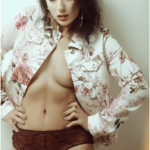











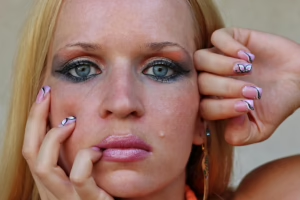
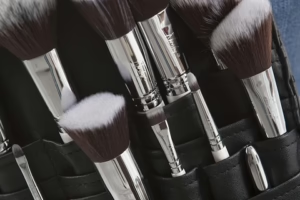

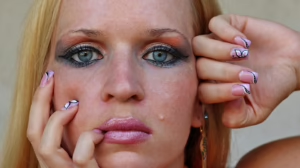
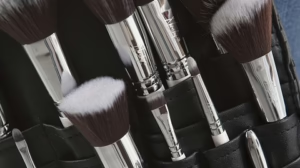
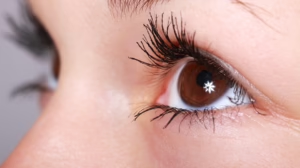




Add Comment